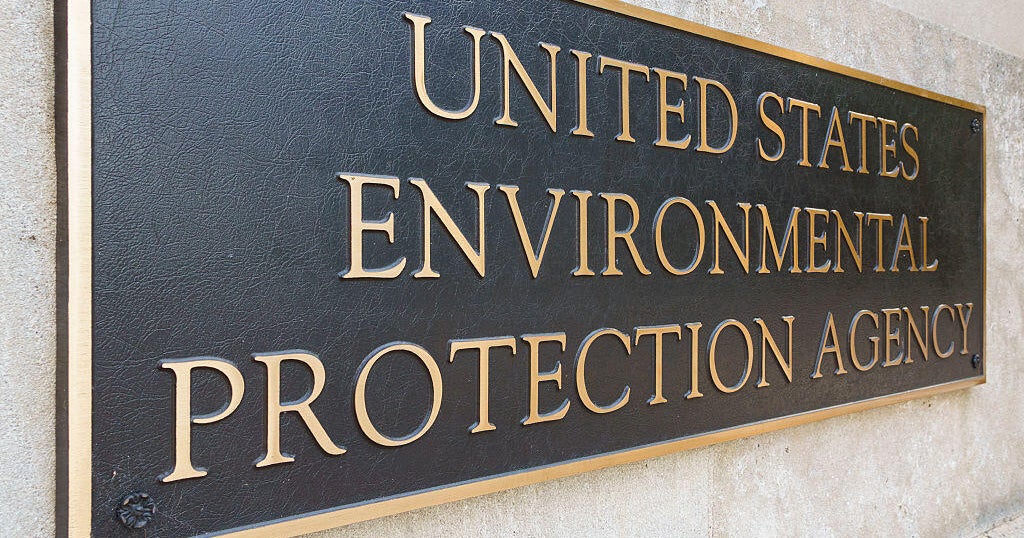
EPA shutters its scientific research arm, with hundreds of scientists expected to be impacted
The Environmental Protection Agency announced Friday afternoon that it is eliminating its scientific division, known as the Office of Research and Development.
The move to shutter the ORD comes one day after the agency said it was undergoing a reorganization involving several other EPA divisions.
ORD conducts critical research to “safeguard human health and ecosystems from environmental pollutants,” according to its website. More than 1,500 employees, including scientists and researchers, are dispersed across the country at 11 different locations, but the bulk are based at the EPA’s headquarters in Washington, D.C., and at a large scientific facility in Research Triangle Park, North Carolina.
Eliminating the office will bring $748.8 million in savings, according to a news release from the agency.
The EPA had 16,155 employees back in January 2025, but following voluntary retirements, dismissals, and other reduction in force (RIF) actions, it is now down to 12,488 employees, the agency said in its release Friday, a reduction of about 22% of its staff. The staffing cuts include 3,201 employees who took the Trump administration’s so-called “Fork in the Road” deferred resignation program, as well as those who took early retirement.
“Under President Trump’s leadership, EPA has taken a close look at our operations to ensure the agency is better equipped than ever to deliver on our core mission of protecting human health and the environment while Powering the Great American Comeback,” EPA Administrator Lee Zeldin said in a statement Friday. “This reduction in force will ensure we can better fulfill that mission while being responsible stewards of your hard-earned tax dollars.”
It was anticipated that ORD would be impacted, according to earlier documents that outlined the agency’s RIF plans. Back in March, the documents indicated that somewhere between 50% to 75% of ORD employees would not be retained, the majority of them leading scientists in their field of research.
A source inside ORD told CBS News Friday that employees found out about the reduction in force via the press release that was sent out to the public, and has not received any formal communication from the agency about what will happen next.
“A friend texted me the press release,” the source told CBS News, “that is how I found out.”
According to the source, most employees are anxiously checking their email, waiting to see if they’ll be reassigned to another program office, or impacted by the reduction.
Some ORD employees have already received notification that they have been reassigned, while most wait to learn their fate. In May, ORD employees were told they would be contacted by other programs inside the agency to discuss potential, lateral moves. But according to the source, it now appears that impacted individuals won’t get much of a choice: either take the reassignment if one is offered, or leave the agency.
“I don’t think I can stay in the U.S.,” one source told CBS News, “there are no jobs here.”
Because of cuts to the federal workforce and cuts to scientific research, there are very few scientific positions available in the U.S., and some are now contemplating work abroad.
“Today’s cuts dismantle one of the world’s most respected environmental health research organizations,” said Jennifer Orme-Zavaleta, former EPA principal deputy assistant administrator for science, in a statement. “EPA’s science office has long been recognized internationally for advancing public health protections through rigorous science. Reducing its workforce under the guise of cost savings is both misleading and dangerous. This does not save taxpayers money; it simply shifts costs to hospitals, families and communities left to bear the health and economic consequences of increased pollution and weakened oversight. The people of this country are not well served by these actions. They are left more vulnerable.”
The ORD’s research touches on a range of issues from PFAS, often referred to as “forever chemicals,” to water-bourne diseases, soot in the air, and environmental factors that contribute to childhood asthma, Orme-Zavaleta said.
It is made up of six major research program offices, per its website, that include Air, Climate, and Energy, Chemical Safety for Sustainability, Health and Environmental Risk Assessment, Homeland Security, Safe and Sustainable Water Resources and Sustainable and Healthy Communities.
It also includes four major research labs including the Center for Computational Toxicology and Exposure (CCTE), the Center for Environmental Measurement and Modeling (CEMM), the Center for Environmental Solutions and Emergency Response (CESER) and the Center for Public Health and Environmental Assessment (CPHEA).